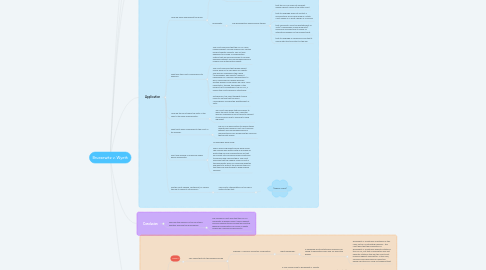
1. Facts
1.1. Parties
1.1.1. Russell, Robalee and Hannah Bruesewitz
1.1.2. Wyeth, LLC
1.2. What Happened
1.2.1. Very shortly after receiving a DTP vaccine made by Wyeth, Hannah developed persistent health problems.
1.2.1.1. The parents took the case to the court of federal claims and lost. They rejected the court’s judgment and the case went to the state court first and then the federal district court, where the Bruesewitzes lost again.
1.2.1.1.1. They appealed.
2. Issue
2.1. What is the legal question before the court?
2.1.1. The question before the court is whether “federal law [can] shield vaccine manufacturers from certain product liability lawsuits in state court that seek damages for serious health problems suffered by children.”
2.2. What do the Bruesewitzes want?
2.2.1. Damages for pain and suffering as well as medical expenses
3. Rule of Law
3.1. What is the precedent in question?
3.1.1. The precedent in question is the National Childhood Vaccine Injury Act of 1986. The Court uses several principles to respond to the Bruesewitzes’ argument, including:
3.1.1.1. government liability in vaccine injury programs
3.1.1.2. state regulations and statutes about conjunctive/disjunctive words and superfluousness
3.1.1.3. damages
3.1.1.4. products liability, focusing on vaccines and immunizations, design, manufacturing defects, and warnings or instructions.
4. Application
4.1. How did each side present the Rule?
4.1.1. Wyeth
4.1.1.1. Wyeth says the NCVIA preempts all design-defect claims against vaccine manufactureres
4.1.2. Bruesewitz
4.1.2.1. The Bruesewitzes argue several things:
4.1.2.1.1. that the NCVIA does not preempt design-defect claims in the state court
4.1.2.1.2. that its language does not protect a manufacturer from being sued in a state court based on a faulty design of a vaccine
4.1.2.1.3. that comment k from the Restatement of Torts (“unavoidably unsafe products”) requires a manufacturer to prove no alternative designs for the product exist
4.1.2.1.4. that its language is superfluous and that it obfuscates the true intent of the law
4.2. What was the court's reasoning in its analysis?
4.2.1. The court reasoned that the NCVIA does indeed prevent vaccine makers from certain product liability lawsuits. The Act was designed to provide a compensation system that would allow people to recover damages without also discouraging vaccine makers from entering the market.
4.2.2. The court reasoned that design-defect claims were not a valid basis for liability. The specific language in the clause (“unavoidable” side effects) makes it impossible for a vaccine manufacturer to win a case based on design because another design could always be used. More importantly, though, the design of the product isn’t considered in the NCVIA, a choice the court believes is intentional.
4.2.3. Furthermore, the court thought it was a reach to assume that the word “unavoidable” invoked the Restatement of Torts.
4.3. How did the court apply the facts in the case to the legal requirements?
4.3.1. The court used deep textual analysis to apply the facts to the case, using the specific language of each clause to support its conclusions and to respond to each argument
4.4. What facts were compelling to the court in its analysis?
4.4.1. The NCVIA was enacted to resolve these disputes and federal court can’t overrule without also discouraging vaccine manufacturers from producing the vaccines that society needs
4.5. Did it use analogy or make any public policy arguments?
4.5.1. No analogies were made
4.5.2. Public policy arguments surely were made. The opinion was written with an end goal of protecting vaccine manufacturers so that our society still has vaccines and continues to produce and improve them. The court reasoned that the Federal Claims Court is the appropriate place for resolving disputes and wants to protect the manufacturers so that they are incentivized to keep making vaccines
4.6. Did the court expand, reinterpret, or narrow the law to reach its conclusion?
4.6.1. The court's interpretation of the law is limited to the text.
4.6.1.1. (typical Scalia)
5. Conclusion
5.1. Describe the decision of the court and whether and how the Rule applies
5.1.1. The Supreme Court held that the NCVIA “preempts all design-defect claims against vaccine manufacturers brought by plaintiffs seeking compensation for injury or death caused by a vaccine’s side effects.”
6. Discussion
6.1. Impact
6.1.1. Two cases that cite this holding include
6.1.1.1. Sikkelee v. Precision Airmotive Corporation
6.1.1.1.1. What happened?
6.1.1.2. Holmes v. Merck
6.1.1.2.1. What happened?
6.2. Importance
6.2.1. Who would care about this and why?
6.2.1.1. A vaccine manufacturer
6.2.1.1.1. It would limit the vaccine manufacturer’s liability to the judgment of the Federal Claims Court. As Justice Scalia said, the NCVIA holds vaccine manufacturers accountable but does it in a way that encourages them to produce vaccines that society needs.
6.2.1.2. A public health professional
6.2.1.2.1. In the wake of the rising anti-vaxxer movement, a public health professional would be glad to see some protection for vaccine manufacturers and some support from the court regarding the importance of vaccines
6.3. Influence
6.3.1. What business practices have been influenced by the holding
6.3.1.1. Public health and educators
6.3.1.1.1. Any industry that relies on vaccinations are likely encouraged by this holding
6.3.1.2. Vaccine makers
6.3.1.2.1. Manufacturers produce more vaccines than ever before and children receive more vaccinations than ever before http://media.chop.edu/data/files/pdfs/vaccine-education-center-too-many-vaccines.pdf
6.3.1.3. Anti-vaxxer movement
6.3.1.3.1. The anti-vaxxer movement seemed galvanized by this decision. The Age of Autism blog uses this case to express discontentment with the NCVIA's preemption idea. What Bruesewitz v. Wyeth Means for American Families
